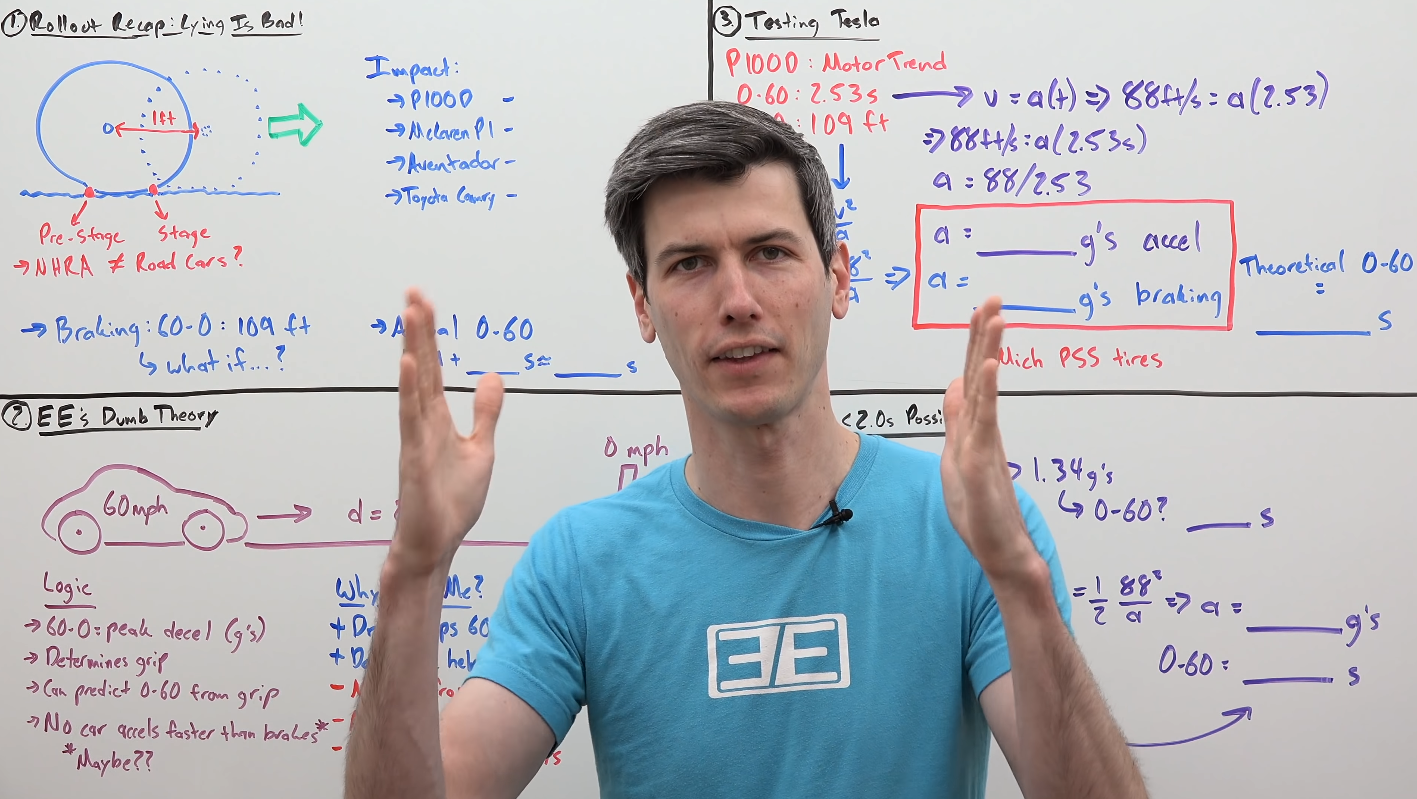Professor Fenske is here to break down the physics and math for you. Tesla claims its new Plaid and Plaid+ tri-motor-equipped Model S sedans will go from 0-60 in under two seconds. That’s a bonkers figure from a company used to doling out bonkers figures. But this one wears asterisks…
If you’re familiar with the sort of car testing typically done by the buff books, you know all about the concept of a rollout. This practice accounts for the first foot a car moves when it leaves the line. It’s a practice related to the timing beam lights used at a dragstrip. Fenske covers this at the beginning of his video, but to sum up, this practice essentially allows for quicker times than a vehicle delivers if you start the timer as soon as the throttle is pushed to the floor.
Tesla is accounting for a rollout to hit its sub-two second 0-60 times. So the cars are still insanely quick, but just not quite as quick as advertised. The engineering and physics at play here are rather amazing. A Tesla Model S Plaid has a curb weight of 4,766 pounds. It can run from 0-60 in the low two-second range. It’s… wild.
And if you care about 5 or 6-60, it will do that in under two seconds.


Leave a Reply